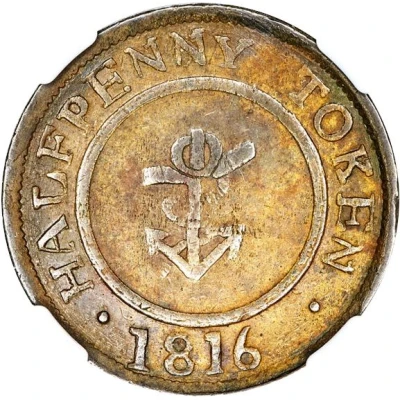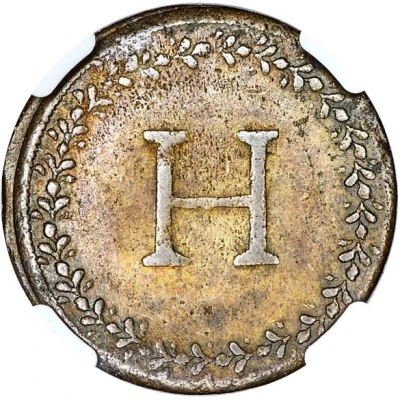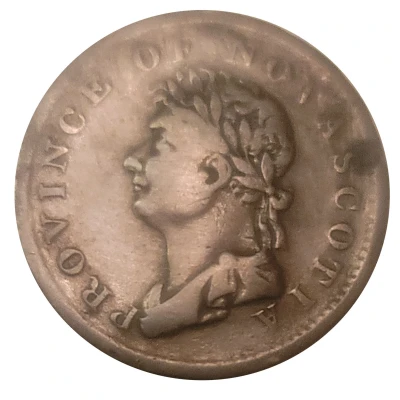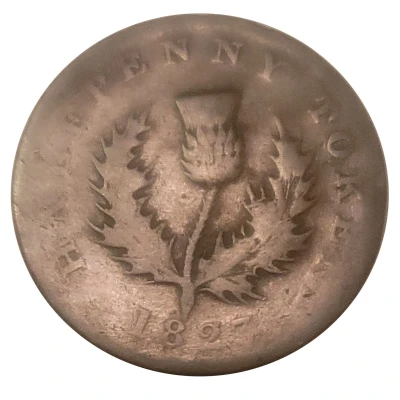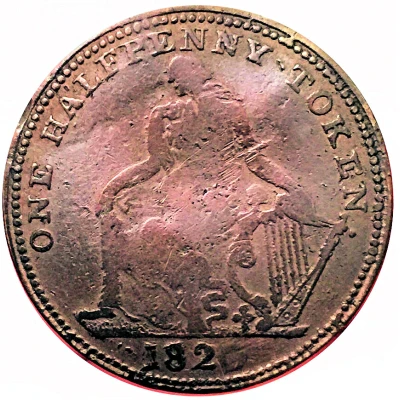
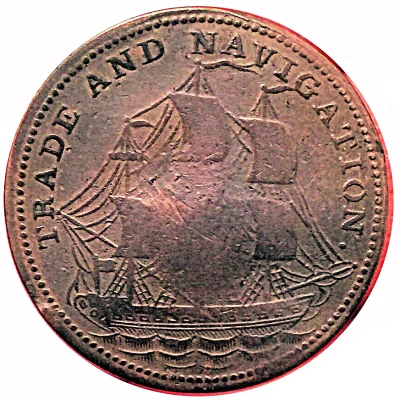

© Mark240590
½ Penny Trade and Navigation
1820 year| Copper | 6.5 g | 27.5 mm |
| Issuer | Nova Scotia (Canadian provinces) |
|---|---|
| Type | Token |
| Year | 1820 |
| Value | ½ Penny (1⁄480) |
| Currency | Pound (1812-1860) |
| Composition | Copper |
| Weight | 6.5 g |
| Diameter | 27.5 mm |
| Shape | Round |
| Technique | Milled |
| Orientation | Coin alignment ↑↓ |
| Demonetized | Yes |
| Updated | 2024-10-04 |
| Numista | N#81471 |
|---|---|
| Rarity index | 87% |
Reverse
Ship at full sail to right.
Script: Latin
Lettering: TRADE AND NAVIGATION
Edge
Plain
Comment
Weight: 6.0 - 7.0gDiameter: 27.4 - 27.6mm
Two varieties exist:
→ NS-24A1 - Copper
→ NS-24A2 - Brass
In 1817 the government ordered removal of all halfpenny tokens by 1820. No immediate measures were taken to provide an alternate supply so attempts began once again to do so privately. This token was of Irish design and the legends link it with Nova Scotia. Detail on this token is very poor.
Interesting fact
One interesting fact about the Token ½ Penny (Trade and Navigation) 1820 from Nova Scotia (Canadian provinces) made of Copper weighing 6.5 g is that it was used as a form of currency in the province during a time when there was a shortage of official currency. The coin was issued by the government of Nova Scotia to help facilitate trade and commerce, and it was accepted as legal tender in the province. Despite its small denomination, the coin was made of copper, which was a valuable metal at the time, and it was designed with a unique image of a sailing ship, which symbolized the province's strong maritime history. Today, this coin is considered a rare and valuable collector's item, and it is highly sought after by numismatists and historians interested in the history of Canadian currency.
